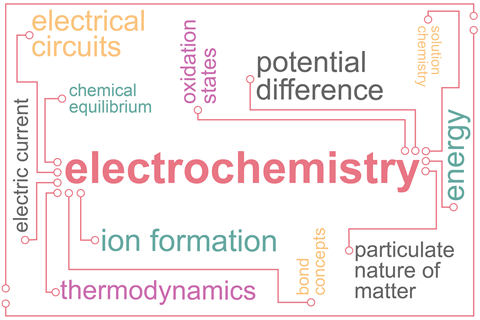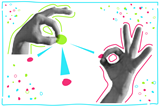Find out what evidence-based research reveals about where learners have difficulty with electrochemistry, and use the tips to help them overcome misconceptions

It’s important that science students emerge from their studies as scientifically literate and prepared for a potential career in science. They should have sufficient scientific knowledge, the competence to solve real-world problems and the ability to make rational and informed decisions.
Teachers and students alike regard electrochemistry as one of the most difficult curriculum areas in secondary school chemistry. Electrochemistry is typically split into two topics: redox reactions and electrochemical cells.
Learners have difficulty visualising chemical processes at the sub-microscopic level
Many studies have shown that students hold misconceptions about electrochemistry. Experiential misconceptions arise from an individual’s daily experience. Instructional misconceptions come from some aspect of teaching delivery or resources used.
Learners struggle with electrochemistry because they have difficulty visualising chemical processes at the sub-microscopic level, and they can’t establish a relationship to the macroscopic and symbolic domains.
Misconceptions hinder learning
Prior knowledge plays a key role in teaching electrochemistry. Students’ misconceptions from prior learning can cause serious problems when covering later content. They will achieve success in this topic area if they’ve acquired most of their prior knowledge in a meaningful way.
Electrochemistry is a rich synoptic topic which draws on knowledge of the particulate nature of matter, bond concepts, ion formation, redox reactions, oxidation states, electric current and electrical circuits, potential difference, energy, solution chemistry, thermodynamics and chemical equilibrium.
Misconceptions are particularly pertinent in the topic areas of electrical circuits, redox reactions, electrochemical cells and chemical equilibrium. Evidence also shows that students struggle to predict cell reactions using given electrochemical data. They sometimes assume that reduction and oxidation can occur independently.
Teaching tips
- Be aware of the misconceptions that students are likely to have from previous learning. You may need to revisit previously encountered prerequisite knowledge to ensure misconceptions haven’t taken root.
- Discuss the similarities and differences between electrochemical reactions and redox reactions at the start of teaching this topic.
- Electrochemistry topics include both macroscopic phenomena and explanations at the sub-microscopic level. Explicitly link these to the symbolic domain; this is key to addressing electrochemical problems.
- Use computer animations and simulations to help students understand chemical procedures and concepts in electrochemistry. By doing so, you help them visualise the operations that occur at the sub-microscopic level.
A recent study investigated Turkish and Indonesian students’ level of understanding of this challenging topic. The study outlines the curriculums taught in Turkey and Indonesia, and their teaching context. Researchers used the Electrochemistry Concept Questionnaire (ECQ) – 18 multiple-choice questions which assess students’ understanding of key electrochemistry concepts – to test the understanding of both student cohorts. The Indonesian and Turkish students’ average scores were 7.21 and 7.02 respectively, with a maximum attainable mark of 18. The average scores of both student sets were below 40%, which shows they hold misconceptions that the ECQ is intended to test.
The results revealed that the learners wrongly believed that hydrochloric acid is split into its constituent ions during electrolysis. Another common misconception exposed was that electrons flow through the solution from one electrode to another. Some students also thought ions accept electrons at one electrode and carry them to the other, and that electrons move from one electrode to the other through the salt bridge. Overall, the findings of the study were broadly in line with those from other studies, confirming how important it is to help students overcome electrochemistry misconceptions.
This article was updated on 17 November 2023.
References
C Nakiboglu et al, Chem. Educ. Res. Pract., 2023, DOI: 10.1039/d3rp00124e














2 readers' comments